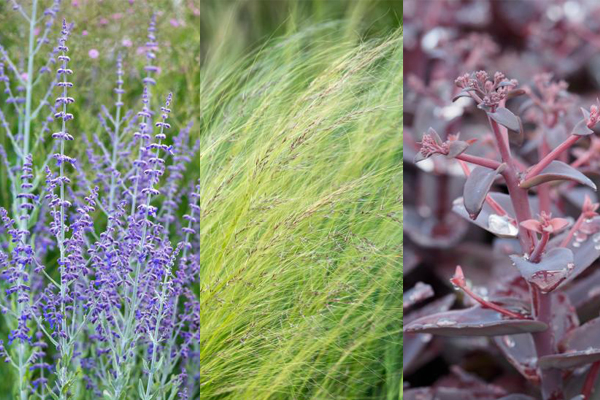Selecting Drought Resistant Plants

With Summer 2022 hitting record high temperatures and the driest July since records began, more and more visitors to the Nursery Shop are asking for ‘drought resistant plants’, hoping to future proof their gardens and reduce their impact on the environment as a whole.
As with a lot of things Nature is far ahead of us and many plants have adapted themselves in response to hotter, drier climates and habitats. Understanding these adaptations and their visible form can help you spot plants that are likely to thrive in a hot dry summer, in the correct soil and light conditions of course.
Leaf form, colour and texture are key and do vary but all aim to reduce transpiration or the loss of moisture through evaporation from the plant surface. Some of the examples below combine two or more of these characteristics making them ideally suited for hot sunny conditions.
Visual signs to look out for:
Narrow foliage or spines which reduce the surface area of the plant and therefore transpiration
Waxy leaves have an outer layer or epidermis that helps them to reduce the amount of water they lose by transpiration. They are often found in conjunction with succulent leaves that are enlarged, thick and fleshy and can store water within them.
Presence of small hairs on leaves and stems – the hairs work together to slow down air flow, trapping moisture and reducing transpiration
RUDBECKIA subtomentosa ‘Little Henry’ PBR
PAPAVER orientale ‘Patty’s Plum’
Colour of leaf – plants with silver or grey foliage help to reflect the sun’s rays again reducing transpiration from the leaf
